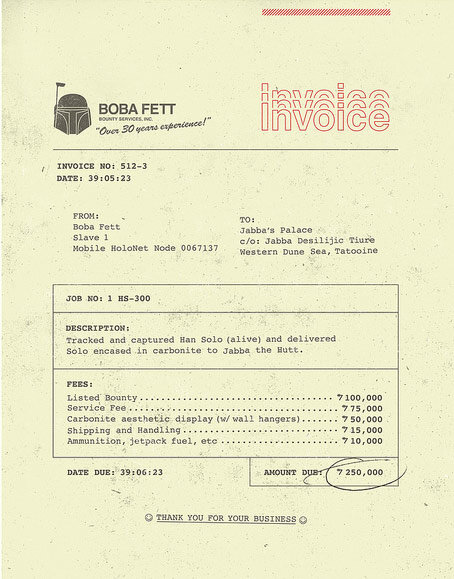Accounting for Non Accountants : Debit, Credits and Financial Statements
When people hear the term accounting, there is an involuntary reaction whereby the comprehension centres (the medical term) of their brains tend to shut down, and sleep mode is activated. This is unfortunate, as accounting, especially to a small business owner, can actually be quite interesting. It is one of the primary tools by which business owners and other interested parties can gage the success of their business, as well as identify areas that require attention and need improvement. To understand accounting, business owners need to have a basic understanding of how it works ( through the basic mechanism debits and credits) and it's results (financial statements), explained below:
Debits and Credits:
The language of accounting is debits and credits, in which any financial transaction can be expressed. Contrary to popular belief debits are not "bad" and credits are not "good". They just represent two sides of the same transaction. Accounting is based on a foundation of double entry; for every action there is an equal and opposite reaction. So, for example, let's say that you sell a jar of pickles for $100 (they are very rare pickles) to Mr. Pilbeam. Let's also assume that Mr. Pilbeam will pay you in ten days. You could translate this into an accounting journal entry as follows:
Debit: Accounts Receivable (amount receivable by the customer) $100
Credit: Pickle Sales$100.
The English translation of this entry is that it increases the amount of the accounts receivable (amount owed by a customer) and correspondingly increases the sales amount.
When Mr Pilbeam, who is very prompt, pays you the $100, the entry is as follows:
Debit: Bank account $100
Credit: Accounts Receivable $100
In other words, your cash has increased by $100 and your accounts receivable has decreased by $100 since it is no longer owing to you.
You will note that you debited your cash to record an increase. Debits are good with respect to cash.
A solid understanding debits and credits is fundamental to students of accounting. For non accountants, it is just important to know that every transaction should have an equal amount of debits and credits. A good accounting software will take care of the rest.
Financial Statements:
Financial Statements essentially summarize all the transactions of the business (usually input via an accounting software) into a meaningful and comparable format. They present the financial condition of the business and through the use of analytical tools like ratios and eyeballing, can be extremely informative. They also provide the basis for which future results can be estimated through the use of budgets and projections. The major components of the financial statements are discussed below:
Balance Sheet:
There are three parts to a balance sheet, which are represented in the following equation:
Assets = Liabilities + Equity
This is kind of fun since, as long as your accounting is being done correctly, your balance sheet will always balance. Your balance sheet also gives you a lot of valuable information. Your assets tell you how much cash you have, your accounts receivable owing from pickle customers, how many pickles you have in inventory and loans receivable from your brother-in-law. Your liabilities, which are a little less fun, tell you what you owe to vendors (accounts payable) and banks and how much money you, the shareholder, has loaned to the company. The equity is the difference between the two, and represents the owners/shareholders share of the business, usually at book value.
Income Statement/ Profit-Loss Statement :
Pickles sales , costs of cucumbers, jars and pickle making machines represent the top line, and all other costs of the business (rent, utilities, insurance) are included in the income statement. If your sales are higher than all of your expenses combined, you will have a profit. If your sales are lower than your expenses you will have a loss.
Statement of Cash Flows:
How much cash is generated by the business is represented in the statement of cash flows. The starting point is your income statement and adjustments are made depending on whether a transaction had a cash impact. For example since you've extended credit terms to Mr. Pilbeam, it means that you are not receiving cash for your sales right away. This will be reflected as a sale on your income statement (i.e. revenue) but will not contribute to cash flow. The cash flow statement is very important for analysis as many profitable businesses have negative cash flow if they have invested in assets or inventory or customers are slow to pay their invoices.
Although many business owners have an intuitive sense of how their business is doing, understanding how accounting works helps to reinforce and hone this intuition . Even if you have made the (often wise) decision to outsource your accounting, you need to spend time reviewing and analyzing your financial statements to determine areas of both strength and weakness and let them be a guide to where you want to go in the future.
Ronika Khanna is an accounting and finance professional who helps small businesses achieve their financial goals. She is the author of several books for small businesses and also provides financial consulting services.
Subscribe to our biweekly newsletter to receive articles, tips, tools and special offers for small businesses.











"QuickStart Your QuickBooks" is the ultimate guide for Canadian businesses looking to master QuickBooks Online (QBO). This comprehensive 250-page book transforms beginners into confident intermediate users, offering step-by-step instructions on everything from data migration and daily tasks like invoicing, to customizing your setup to handle Canadian sales taxes. With no prior accounting knowledge necessary, this guide includes screenshots, best practices, and essential reports to help you increase profitability and take control of your finances. Dive into QuickBooks with confidence and ease, and let "QuickStart Your QuickBooks" streamline your business operations.
Download your free QBO Set Up Checklist